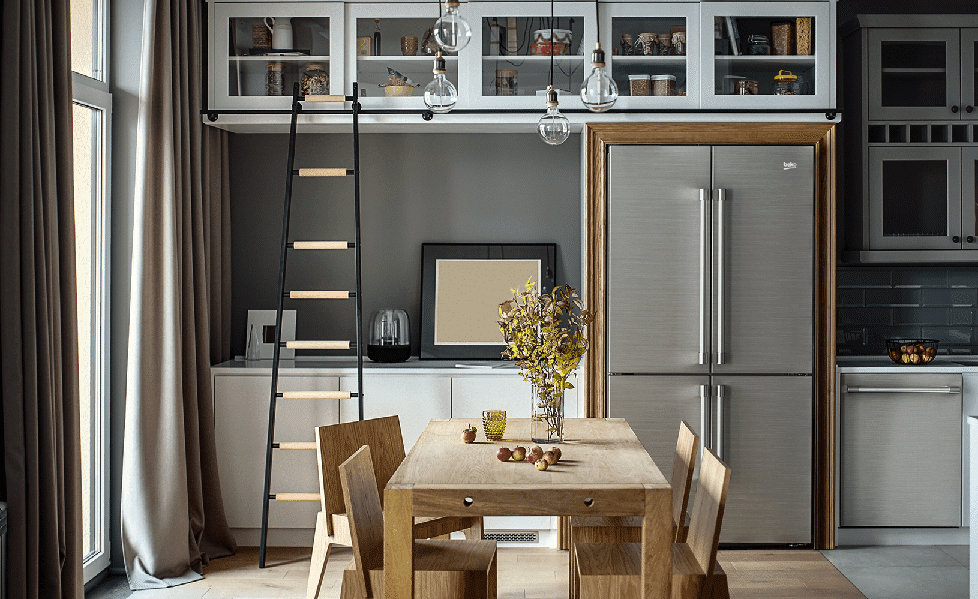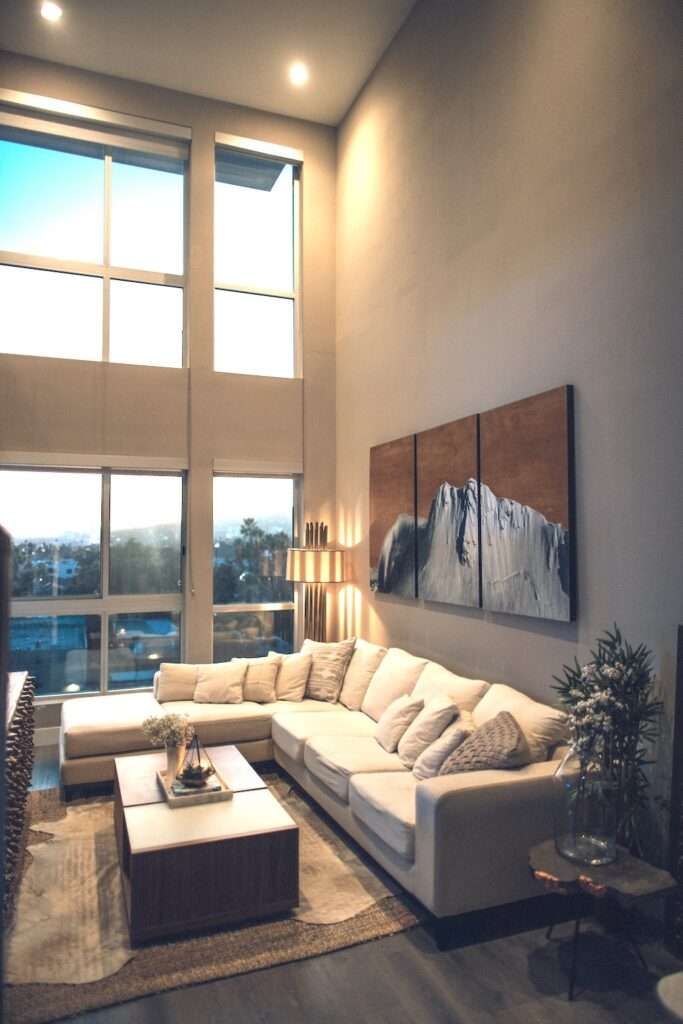Whether you’re starting from scratch in a new home or revamping your current living space, interior design and home renovation can be exciting yet intimidating projects. Here’s how to circumnavigate the common challenges.
Renovating your home or redesigning an interior is much more than choosing a new paint color scheme or selecting furniture; it’s about creating a space that resonates with your personal style while being functional and inviting.
But with a few key considerations, it can go a lot smoother: identifying your style, setting a budget, planning your space, choosing a color scheme, selecting the right furniture, incorporating pendant lighting, and adding personal touches can help you create a home that truly reflects who you are.
And if you’re looking to sell, a home renovation or re-design right can increase your home’s value while also allowing you to create the perfect living space. Whether a small-scale makeover or a full-blown renovation project, you need adequate preparation to achieve your desired results.
How to save money on a home renovation
Renovating a house can be a pricy project. Costs can quickly add up and get out of hand, even when you thought you had everything under control. Luckily, regardless of whether you have a small or big budget, there are clever ways you can save money. Read the following and find out how you can have the house of your dreams and not break the bank.
If you wish to renovate your entire home and you have the budget for it, you might be tempted to gut the whole place all at once. However, remodeling your home room by room can save you a lot of trouble (and money). This way you will be able to easily deal with unexpected expenses without having to halt work. You also won’t have to take loans or make compromises in other areas of your home. In addition, by upgrading one room at a time, you won’t find yourself living in a place full of unfinished rooms with nowhere to sleep or take a hot shower.
Focus on the future
While you are remodeling your home, it might be a good time to invest in some upgrades that will save you a ton of money in the long run. For instance, insulating your walls, ceiling or your attic can help you spend much less on your electric bills for years and decades to come. Various sites such as insulation4less offer great deals on insulation products, so check them out.
Roll up your sleeves
Maybe DIY projects are not for you, but even if you are not that handy, you can still save money during the renovation by rolling up your sleeves and getting some work done. You do not know how to put up drywall, lay tiles, or make kitchen cabinets? Not an issue. You can still prep your space for the contractors. Cleaning up or demoing the space will save you a decent amount of money since you are paying your contractors per hour. On the other hand, if you are willing to brush up on your DIY skills, online tutorials can be your ally. Even if you do not have the necessary tools, you can always rent them from your local hardware store.
Find what can be reused
Want to renovate your kitchen? Check your old cabinets and see whether a few coats of paint and some new hardware will get the job done. If not, consider just replacing the doors while leaving the rest in place. Oftentimes, not everything needs to be changed to achieve a brand-new look. However, if you are forced to get new materials, look at salvage yards or visit building material auctions first. Check out trade websites as well, you never know when someone will have a load of lumber they want to get rid of for a fracture of the price.
Look for sales
Sooner or later, everything will be on sale, you just have to be patient. If you wish to buy new appliances, wait for the holiday season. Black Friday is ideal for purchasing electronics, and if you are determined to give your backyard a makeover, the end of summer is ideal for purchasing new lawn furniture. Look for the best time to buy new items, be patient, and grab that perfect deal.
Before you renovate
The last thing you want to encounter with a home redesign is unexpected challenges due to poor planning, as these can slow down your renovation and leave you with lots of unnecessary expenses. Before starting any home renovation, you must do some important things.

Here’s everything you need to know before embarking on your home makeover journey.
Set a budget
First, it’s important to set a budget. No matter how grand your design dreams may be, the reality is dictated by your budget. It’s important to have a clear understanding of your financial parameters from the start. This includes everything from paint and furniture to labor costs if you’re hiring professionals.
Work with a professional (and get a contract!)
Despite all your best efforts and meticulous planning, there may be times when you hit a roadblock or feel unsure about your design choices. Don’t be afraid to seek professional advice when needed.
An interior designer or decorator can provide invaluable input and innovative ideas you may not have considered. They can also help you avoid costly mistakes, get the most out of your budget and ensure your vision comes to life exactly as you imagine it.
If you need to hire a contractor or any professional for the renovation, insist on establishing a fixed contract. Doing this can prevent many issues regarding the payment plan, extra costs, surprise hidden fees, and the renovation schedule.

Even the best professionals can face difficulties and accidents that can slow work progress, with delays attracting more expenses. But with a detailed written agreement, you can protect yourself and your purse from opportunist contractors who want to take advantage of every delay to get more money from you.
Get rid of dirt, grime, and mold
Dirt, grime, and mold can compromise the structural integrity of surfaces and cause potential long-term damage. Also, their appearance means your surface may not allow for better adhesion of paints, coatings, or other renovation materials. By eliminating them, the renovation can proceed on a stable foundation.

Places like outdoor walls, roofs, pavement, driveways, and other floor spaces need a good cleaning before renovation. You can use pressure washing in such areas to reveal hidden damage or deteriorated areas that may require repairs or replacement before your renovation begins.
Prepare a temporary living arrangement
If you’re planning a large-scale or massive renovation, you might need a temporary living arrangement. That is especially important if you expect many people to constantly walk in and out of your home. That can interrupt your daily life or rid you of your privacy. Also, a temporary living arrangement will prove helpful if your renovation will affect essential areas like your kitchen or bathroom. You can consider staying with family or friends, renting a short-term apartment, or setting up a makeshift kitchenette away from the renovation area.
Identify your style and needs
Before you get started with any redesigns, you’ll need to identify your design style. Are you more inclined toward a modern minimalist aesthetic or are you more of a vintage, eclectic kind of person? Your style should reflect who you are and what you love. However, it’s equally important to consider your practical needs. Think about your daily routine and how you use your space.

Choosing the right furniture is also crucial; it’s not just about aesthetics but also about comfort and functionality. It should be in proportion to your room size and consistent with your overall design theme. Don’t rush this process; take your time to find pieces that you love and will enjoy for years to come.
The color scheme of a room also plays a significant role in setting its mood. Light colors can make a space feel larger and more airy, while darker shades can create a cozy, intimate atmosphere.
Your chosen palette should complement your furniture, fixtures, and decor elements. It’s usually a good idea to stick with three main colors — a dominant, secondary, and accent color.
Related on Ethos:


